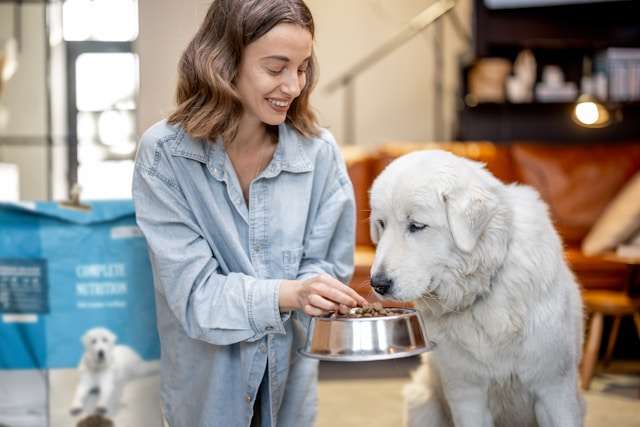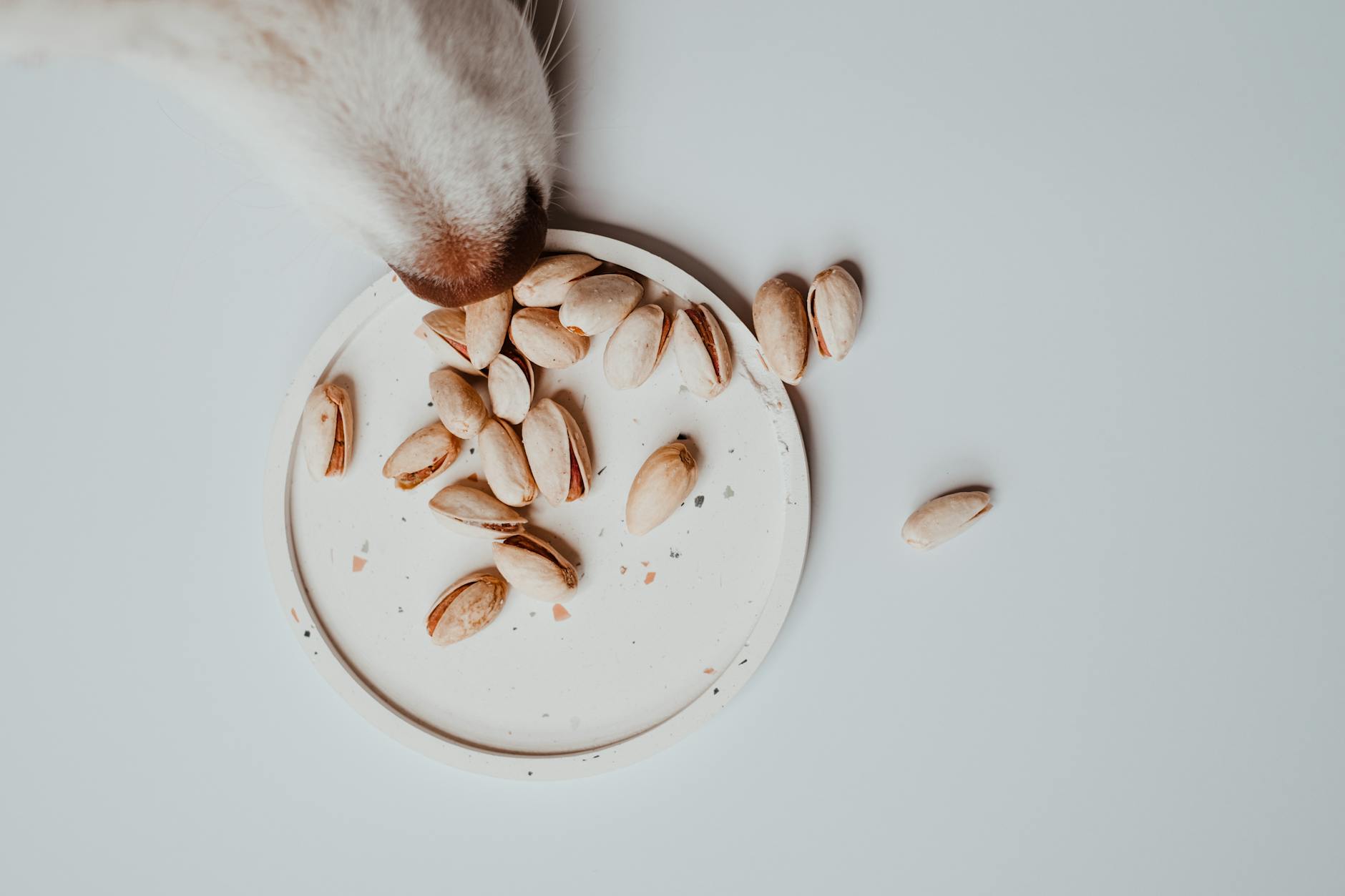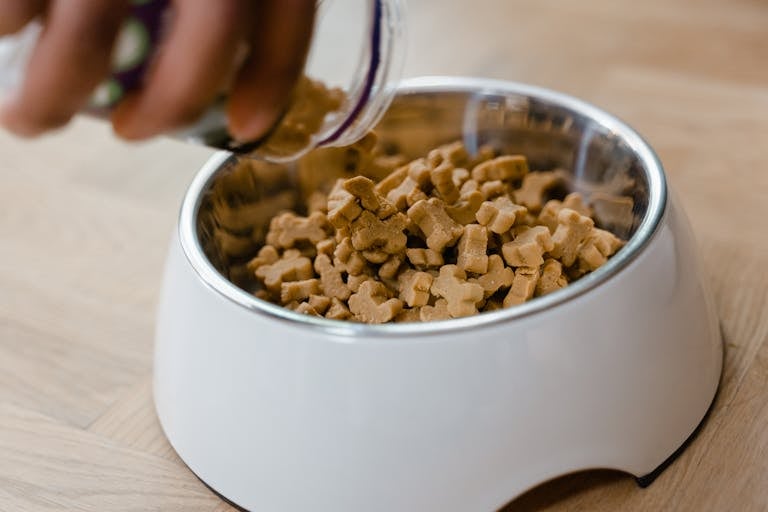Best Dog Food for Picky Eaters: Top Choices and Expert Tips

Getting a picky eater to enjoy their meals can feel like an uphill battle. Not only does it test your patience, but it also raises concerns about whether your dog is getting the nutrients they need to stay healthy. Luckily, there are ways to make mealtimes both stress-free and nutritious.
From exploring flavorful options to understanding what picky eaters need, this guide is here to help. If you’re searching for reliable solutions, you may find value in our top-rated dog food recommendations tailored to different needs.
Table of Contents
Understanding Picky Eaters
Not every dog is enthusiastic about what’s in their bowl. For many pet owners, it can be perplexing to understand why their pup turns their nose up at food. In this section, we’ll explore the common reasons behind picky eating and how to identify whether this is an issue with your furry friend.
Common Reasons Dogs are Picky Eaters
Picky isn’t always about preference—it’s often a mix of various factors. Understanding these potential reasons can help you address the issue effectively:
Health Issues
Sometimes, the root cause lies in a health problem. Conditions like dental pain, digestive troubles, or even allergies can make eating uncomfortable for your dog. If your dog’s eating habits have recently changed, consulting your vet should be your first step. This helpful guide on dealing with picky eaters shares tips for recognizing potential health concerns.Past Food Experiences
Dogs can form negative associations with food, especially if they’ve experienced gastrointestinal discomfort after eating. This can make them wary of new foods, even if they’re nutritious and delicious.Behavioral Factors
Sometimes, picky eating is less about the food and more about the pup’s behavior. Dogs are creatures of habit, and sudden changes in their environment or routine can make them fussy at mealtime. Additionally, some dogs may hold out for table scraps or tastier “human “food,” turning their canine menu into a negotiation.Taste and Texture Preferences
Yes, dogs have preferences too! Some might enjoy crunchy kibble, while others lean toward softer, moist textures. If your pup has a choice, switching the consistency of their meals can sometimes solve the problem. You might find inspiration in these grain-free options tailored to picky eaters.
Signs Your Dog is a Picky Eater
Is your dog being picky? It helps to know what signs to watch for. Here are some common indicators:
Turning Away or Sniffing Food Without Eating
If your dog approaches their bowl only to sniff and walk away, they might be unimpressed by the smell or taste.Selective Eating
Does your dog eat certain parts of their food but leave the rest? This selective behavior is a sure sign of picky eating.Skipping Meals Regularly
Healthy dogs generally have a consistent appetite. They skip meals entirely but seem otherwise normal; they may be picky rather than unwell.Refusing New Brands or Flavors
Sometimes, introducing new food leads to outright rebellion at mealtime. Many dogs prefer continuity and need time—or coaxing—to adapt to something new.Preference for People Food
Is your dog ignoring their kibble and waiting for a slice of turkey? Dogs will often hold out for tastier alternatives if they eventually get some. Managing human food temptations may help break this cycle.
Identifying these patterns is the first step in addressing picky eating and ensuring your dog returns to a balanced diet. Remember these reasons and signs as you select the best food options for your picky eater. If you’re curious about specific brands, check out this detailed review: Hill’s Science Diet Wet Food, which has shown excellent results with picky pups.
Essential Nutritional Needs
Dogs, just like humans, need a well-rounded diet to thrive. Meeting their essential nutritional requirements is not just a matter of preference—it’s fundamental for their overall health and longevity. For picky eaters, ensuring they still get all the necessary nutrients becomes even more critical. Let’s dive into what your dog truly needs to stay in optimal shape.
Macronutrients and Micronutrients
Edog’sdog’s diet must include a balance of macronutrients (proteins, carbohydrates, and fats) and micronutrients (vitamins and mineraHere’sere’s why each of these is so crucial:
Proteins
Proteins are the building blocks of life. They repair tissues, support growth, and maintain a strong immune system. High-quality protein sources like chicken, beef, and lamb are ideal for dogs. If your dog is fussy, explore nutrient-packed options such as the best food for sporting breeds, which often include higher protein levels to meet energy demands.Carbohydrates
While carbs often get a bad rap, they provide essential energy for daily activities. Whole grains, sweet potatoes, and certain legumes are great carbohydrates for your dog’s diet.Fats
Fats are energy reserves and support skin health, a shiny coat, and brain function. Omega-3 and Omega-6 fatty acids are particularly beneficial, often found in fish oil and flaxseed.Vitamins & Minerals
Vitamins like A, D, E, and K, along with minerals such as calcium, magnesium, and zinc, play a vital role in bone health, digestion, and metabolic functions. Picky eating may cause deficiencies in these areas, so incorporating fortified or balanced dog foods is key. Refer to this guide on balanced dog nutrition to learn more about essential nutrients.
Role of Hydration

Photo by Amina Filkins
Water might not be the first thing that comes to mind when discussing nutrition, but it’s arguably the most important. Like all animals, dogs need consistent hydration to regulate body temperature, aid digestion, and maintain healthy organ functions.
Why Hydration Matters
Dogs can quickly develop dehydration without adequate water, impacting their energy levels and overall health. Signs of dehydration include dry gums, lethargy, and sunken eyes.Tips for Encouraging Water Intake
Picky eaters sometimes avoid drinking enough water. To encourage hydration:- Provide fresh water daily.
- Add moisture to meals with wet dog food.
- Try fun additions like ice cubes flavored with low-sodium chicken broth.
For older or highly active dogs, you might find these tips helpful in choosing wet food options tailored for their needs. Hydration is particularly pivotal for active and aging dogs.
Ensuring your dog gets all the essential nutrients and stays properly hydrated is the cornerstone of their well-being. With picky eaters, creativity and persistence go a long way in meeting their nutritional needs.
Best Dog Food Options for Picky Eaters
If your dog consistently refuses meals, it can be frustrating and worrisome. Don’t you’re not alone in this. Exploring the right food options can transform mealtime struggles into tail-wagging satisfactLet’sLet’s break down some of the best choices out there that even the pickiest pups will appreciate.
Wet vs. Dry Dog Food

Photo by Zen Chung
Choosing between wet and dry dog food often depends on the dog’s preferences. Wet food is generally more palatable due to its rich aroma and soft texture, making it a hit for picky eaters. On the other hand, dry kibble can be more convenient, cost-effective, and good for dental health.
Benefits of each:
Wet Food:
- It is easier to chew, especially for senior dogs or those with dental issues.
- Higher moisture content, improving hydration.
- More pungent smell and flavor that attract fussy eaters.
Dry Food:
- Long shelf life and easier storage.
- It can be used with food toppers to enhance taste.
- It is excellent for teeth cleaning as it reduces plaque buildup.
If you want a deeper dive into wet food options, check out this list of top wet dog food picks.
High-Quality Proteins
Dogs love protein, and the quality matters as much as the quantity. High-protein options like chicken, beef, lamb, and fish are naturally more enticing for picky eaters. These proteins provide essential nutrients while tempting dog’sdog’s taste buds.
Examples of high-quality protein sources:
- Chicken: Lean and packed with nutrients, it’s an all-time favorite.
- Beef: Rich in taste and iron—great for energy levels.
- Fish (e.g., Salmon): Omega-3 fatty acids support healthy skin and coat while enhancing flavor.
- Turkey: A less common option that many dogs find irresistible.
You can explore high-protein options such as Purina Pro Plan to cater to dog’sdog’s taste and nutritional needs.
Grain-Free Options
Grain-free formulas can be a game-changer for dogs with specific food sensitivities or allergies. These recipes replace grains like wheat, corn, and soy with digestible carbs like sweet potatoes or lentils.
Why choose grain-free food?
- Easier digestion for sensitive stomachs.
- Increased protein content in many grain-free recipes.
- It is ideal for dogs prone to food allergies.
If you think your dog might benefit from grain-free options, peek at grain-free choices for picky eaters.
Homemade Dog Food
Homemade meals can be a fantastic alternative if you can put in the time. They give you total control over ingredients and can be especially beneficial for dogs with specific dietary needs. However, crafting the perfect homemade meal requires careful balancing of nutrients.
Benefits of homemade dog food:
- Customizable to your dog’s preferences.
- Free of artificial preservatives and fillers.
- Fresh and often more flavorful.
But watch out for pitfalls. Homemade meals must include the right proportions of protein, fats, and vitamins. Speak with a vet or pet nutritionist to ensure the dog’s meals are balanced. For inspiration, VCA Hospital offers guidelines for feeding picky eaters.
Popular Brands and Formulas
When commercial options are your go-to, choosing reputable brands tailored for picky eaters is essential. Here are some trusted Hill’s
- Hill’s Science Diet: Known for formulas catering to specific needs, including picky eaters and sensitive stomachs.
- Royal Canin: Offers breed-specific and appetite-enhancing recipes.
- Merrick: Features a range of grain-free options with high-quality protein.
- Blue Buffalo: Prioritizes natural ingredients and excellent taste.
- Nom Nom: Fresh, human-grade meals that are customizable.
For an in-depth look at popular wet food, browse Nutritious Wet Dog Food Options.
Tips for Encouraging Better Eating Habits
Improving dogs’ eating habits doesn’t have to be stressful. It’s all about creating a positive and structured approach. If you’re dealing with a picky eater, here are actionable tips to make mealtime more enjoyable and effective for you and your furry friend.
Consistency is Key
Dogs thrive on routine. Just like you have meal times, your dog should, too. Setting regular feeding times helps condition their internal clock, making them anticipate their meals. Stick to a consistent portion size—overfeeding can lead to weight issues, while underfeeding may not provide enough nutrients.
For portion control, always use a measuring cup. Too much food can overwhelm your dog, and little by little, they might lose interest. Feeding at the same time every day establishes clear expectations, preventing unnecessary hunger-related stress. If you feed your dog more than once a day, splitting meals into small portions can also help. Need ideas? The KeClub’s guide on feeding routines offers detailed insights for structured mealtimes.
Interactive Feeding Techniques

Photo by Vie Studio
Interactive feeding can make meals fun and engaging. Puzzle feeders, slow-feeder bowls, or even creating obstacle challenges can mentally stimulate your dog while they eat. These techniques benefit highly energetic dogs or those reluctant to eat from their bowl.
Why use interactive methods? They slow down eating, help prevent choking, and make mealtimes enjoyable. For dogs that gobble up food too quickly or seem unenthusiastic, these gadgets change the experience. The American KeClub’slub’s tips on slow feeding are a great resource to explore this approach.
Mixing Foods to Enhance Appeal
Sometimes, the most straightforward trick is mixing up their meals—literally. Adding a small amount of wet food to dry kibble creates a richer aroma and softer texture, enticing even the fussiest eaters. Bone broth or low-sodium chicken broth can also work as a flavorful topper.
If your dog is particular about flavors, rotate recipes within the same brand to maintain variety while sticking to their dietary needs. Always introduce new combinations gradually to avoid upsetting their stomach. Check out The HoKitchen’shen’s food mix strategies for more blending ideas and tips.
Consulting with Veterinarians
If your dog consistently refuses meals despite these efforts, it’s time to bring in the experts. Veterinarians can help uncover health issues like dental pain, food allergies, or digestion problems. They may also recommend specific dietary plans tailored to the pet’s needs.
Don’t forget that consultations with professionals can prevent long-term health problems. A vet can guide portion sizes and calorie intake and suggest high-quality foods, like specialized options for senior dogs.
Encouraging better eating hadoesn’tesn’t have to be complicated—structure, creativity, and professional support make all the difference.
Frequently Asked Questions About Picky Eaters
Understanding picky eating habits in dogs often leads to many questions. This section addresses some of the most commonly asked questions pet owners have when dealing with fussy eaters.
Why Is My Dog Suddenly Picky About Their Food?

Photo by MART PRODUCTION
Sudden changes in eating habits could stem from health issues like dental pain, stomach upset, or stress. Environmental changes like new routines or recently switching foods might also trigger pickiness. If this behavior persists, consult your vet to rule out medical concerns. This guide on feeding picky dogs offers professional insights into addressing these challenges.
How Can I Tell IDog’sDog’s Pickiness Is Behavioral or Medical?
Signs like consistent eating refusal, lethargy, vomiting, or weight loss may indicate a medical concern. On the other hand, behavioral pickiness often shows up as selectively eating certain foods or holding out for treatment unsure; a vet consultation ensures dog’s health is prioritized.
Can Adding Toppers or Broth Help Picky Eaters?
Yes, toppers can enhance flavor, making meals more appetizing. Options include wet food, bone broth, or plain yogurt. Mixing these with kibble often entices picky eaters. Refer to this comprehensive picky eater guide for topper ideas and feeding strategies.
Should I Switch to Wet Food for a Picky Eater?
Wet food tends to be more palatable due to its strong aroma and moist texture. It’s a great option, so ensure it meets dog’s nutritional requirements. Pairing wet and dry foods can also balance taste and dental health benefits. Check out these dry food options for a picky eater-friendly diet.
How Do I Stop My Dog From Expecting Table Scraps?
Avoid feeding table scraps altogether to prevent reinforcing this behavior. Stick to a feeding schedule and only provide meals designed for dogs. Reducing access to alternatives helps retrain their expectations over time. For more tips, see Purina’s guide on feeding picky eaters.
Are Homemade Meals Better for Picky Dogs?
Homemade meals can be beneficial but must be nutritionally balanced. Giving your dog fresh, whole ingredients tailored to their tastes can help. However, consult with a vet or nutritionist before committing to homemade feeding.
Let these answers serve as a starting point for tackling your friend’s picky habits, ensuring they stay healthy and happy at mealtimes.
Conclusion
Finding the best dog food for picky isn’t easy; it’s achievable with patience and the proper knowledge. Understanding dog’sdog’s preferences, health needs, and nutritional requirements is key to improving their relationship with food. By exploring various textures, incorporating toppers, or even considering homemade meals, you can make mealtime enjoyable and nutritious for your pup.
For specialized food options that cater to specific needs, check out Best Dog Food For Sensitive Stomachs.







Thanks for sharing. I read many of your blog posts, cool, your blog is very good.